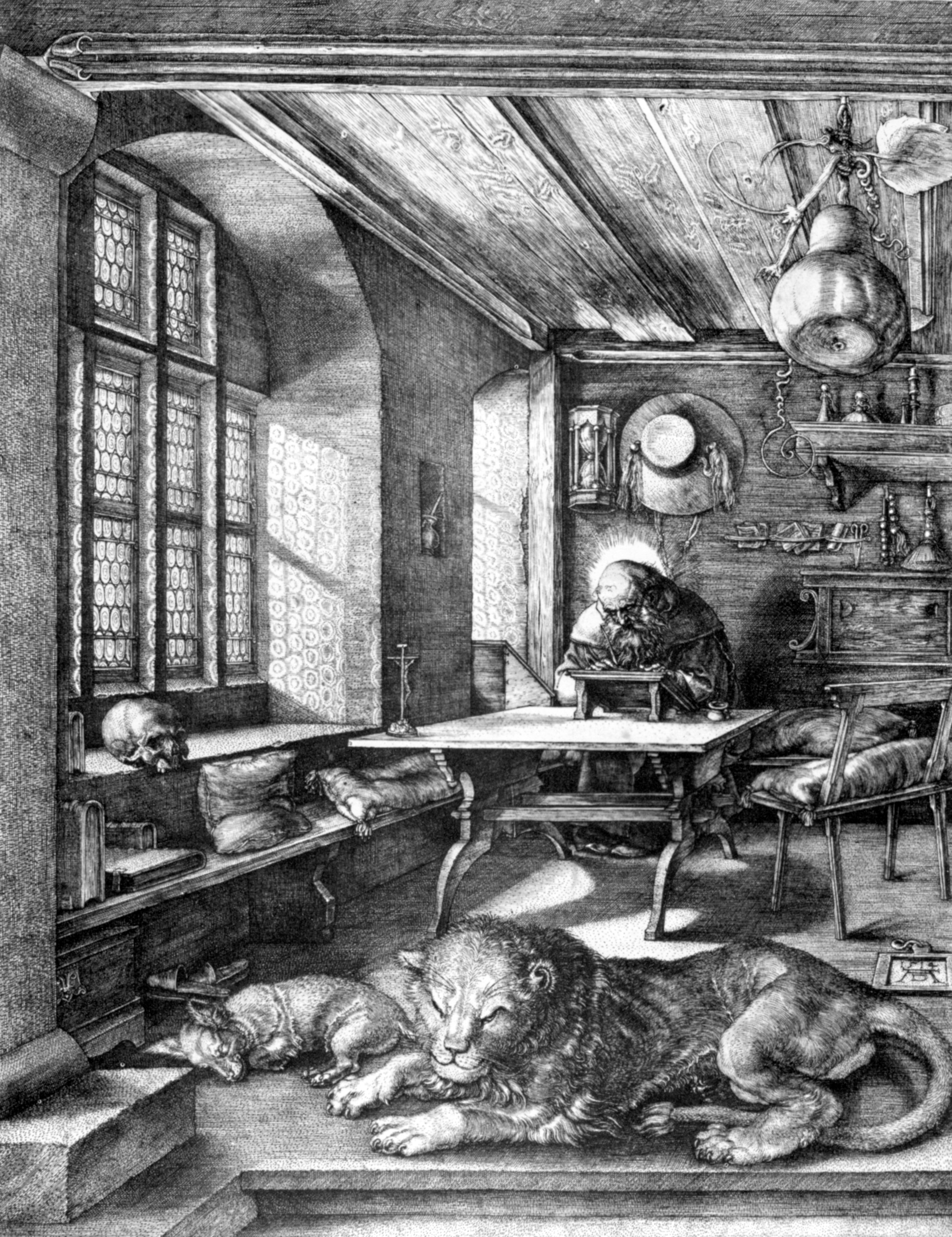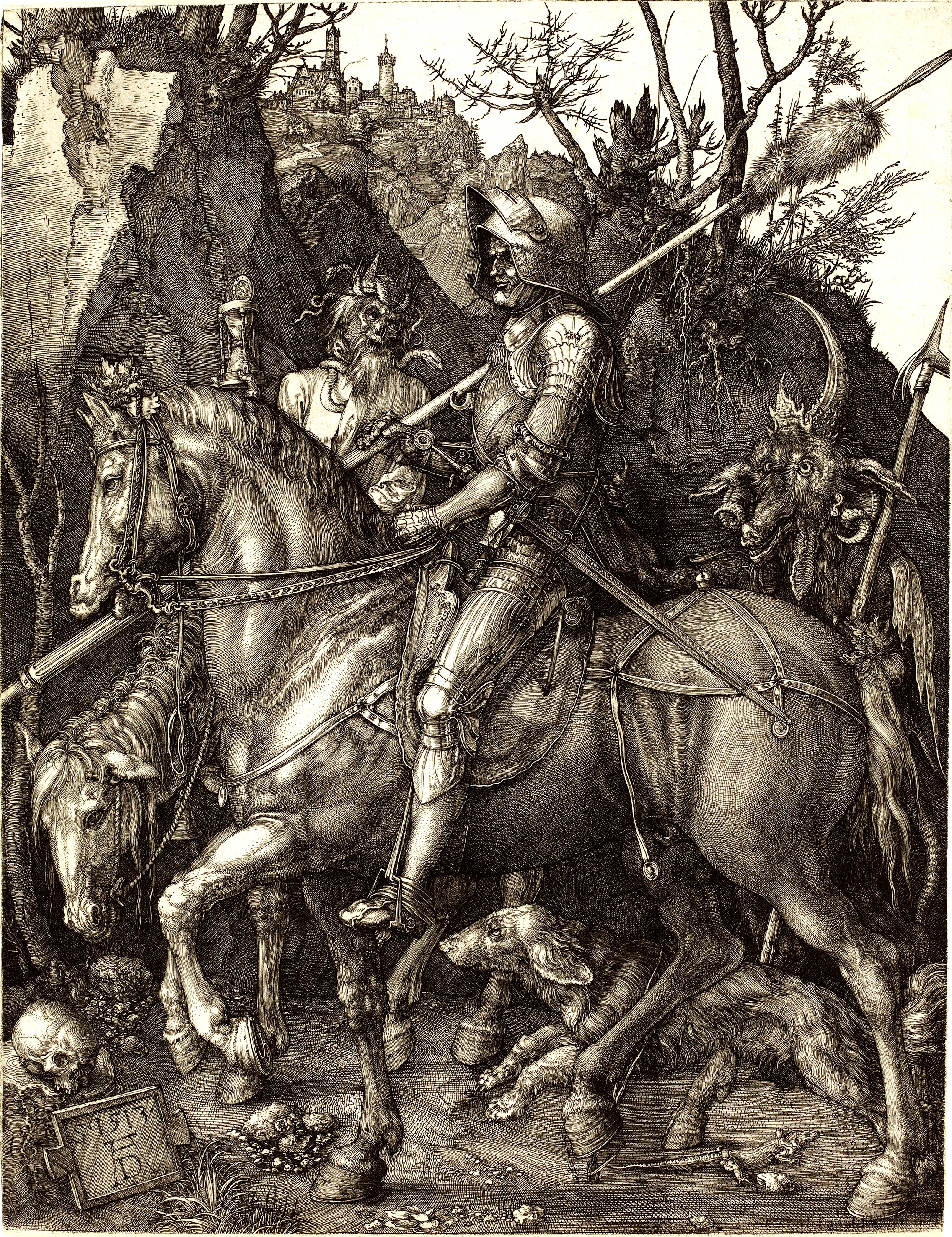
Replete with symbols--some understood and some unknown--and brimming with psychological content, Melencolia I is perhaps the most heavily studied and written about image in the history of art, next to Leonardo da Vinci's Mona Lisa. Described as representing the contemplative life, and more specifically the melancholic pitfalls of an overly intellectual, creative temperament, the large seated figure in the engraving has been suggested to be an allegory of the artist himself.

Dürer's version of St. Jerome in His Study also depicts symbols of death and eternal life; death is represented by the skull and hourglass, and eternal life through the crucifixion on the corner of St. Jerome's desk. Dürer achieved a rich range of tones creating a strong sense of light and depth that highlighted the sanctity of St. Jerome and the crucifix in glorious sunlight. St. Jerome (ca.340-420) was a great Bible scholar known for the Vulgate, his revised Latin translation of the New and Old Testaments. A popular humanist saint throughout the Renaissance, he was often depicted in his chambers engrossed in his studies. He is characteristically presented with his cardinal's hat and accompanied by his lion companion (a friendship he made when he compassionately removed a painful splinter from the lion's paw).
It has been argued that St. Jerome in His Study and Melencolia I represent the division of divine and secular knowledge, comparing St. Jerome's peacefully meticulous divine study with the angst-ridden, troubled genius in Melencolia I.
In other words, attentive religious study leads to internal reward and harmony, while secular intellectual pursuits lead to tribulations and anxiety.
While modern scholars often group Dürer's three master engravings from 1514 together, suggesting they were conceived as a set by the artist and comercially offered as such, this was evidently not the artist's intent. He often sold impressions of Melencolia I and St. Jerome in his Study together, though this is likely due to their highly recognized importance even during his life and their contemporaneous creation.


No comments:
Post a Comment